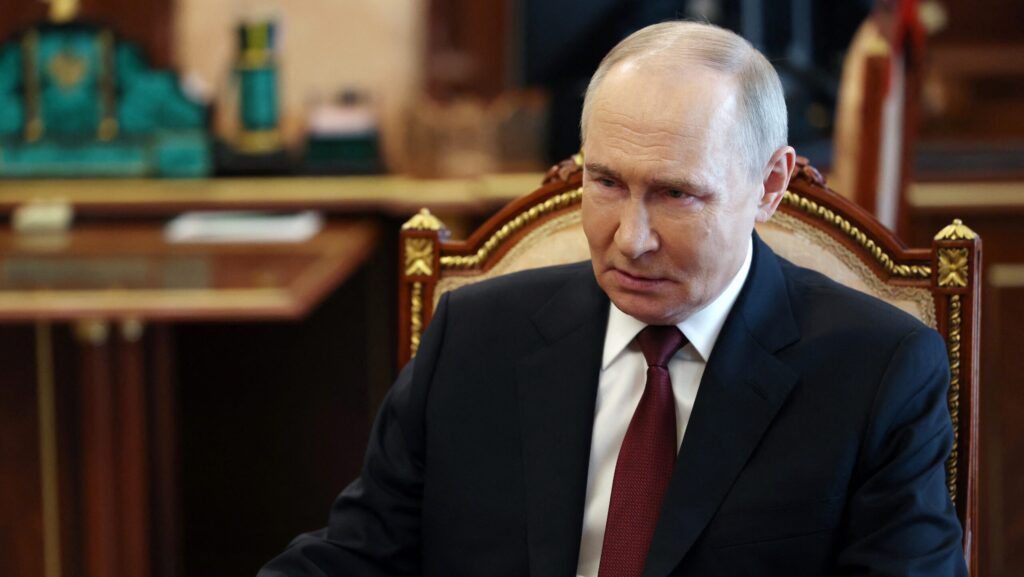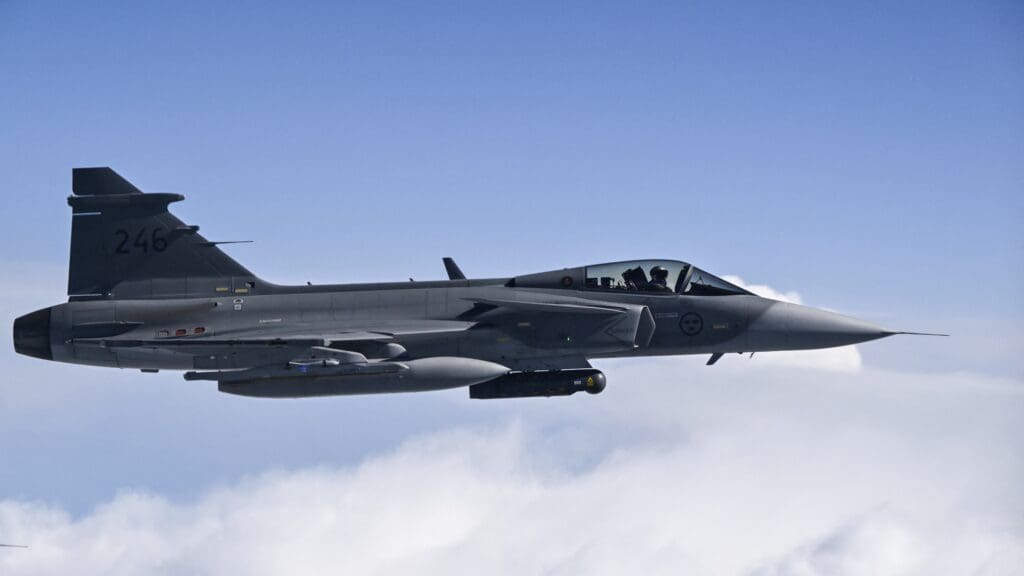It has been exactly 73 years since the United States Senate ratified the North Atlantic Treaty on 21 July 1949. The treaty forms the legal basis of and is implemented by the North Atlantic Treaty Organization (NATO). But what exactly is NATO and how did it come into existence?
Context
Due to the hostilities and clashes that had characterized the Soviet and Western relations in the first half of the 20th century, such as the Berlin blockade or the 1948 coup in Czechoslovakia, there was concern among Western European countries that Moscow would impose its authority across Europe.
Despite this, European powers were downscaling their defence establishments and forces after the Second World War.
However, British Foreign Secretary Ernest Bevin spoke of the need for a ‘treaty of alliance and mutual assistance’, a defensive alliance and regional grouping within the framework of the United Nations Charter.
At the same time, the United States made it clear that it would only agree to provide military support for Europe if it were united. In response, Western European powers signed the Brussels Treaty, which ultimately served as the basis for the North Atlantic Treaty.
The Treaty
The North Atlantic Treaty–or Washington Treaty–forms the basis of NATO. It was signed in Washington on 4 April 1949 and ratified by the US Senate just two and a half months later. The Treaty derives its authority from Article 51 of the UN Charter, which clearly reaffirms the inherent right of independent states to individual or collective defence.
The Treaty contains 14 articles and provides for flexibility on all fronts. Each ally has the possibility to implement the text in accordance with its capabilities and circumstances.
Article 1
The first article calls for member parties to settle disputes peacefully, as to not endanger international peace and security. It also states that the states should refrain from the threat or use of force in any manner inconsistent with the purposes of the UN.
Article 2
The second article–also referred to as the ‘Canadian Clause’–stipulates that parties should help develop international peace and promote conditions of stability, eliminate conflict in international economic policies and encourage economic collaboration. Technology sharing and NATO’s information programme came to be due the Canadian Clause.
Article 3
The third article calls for member nations to maintain and develop their individual and collective capacity to resist armed attacks. This has been widely interpreted as the foundation of the ‘2 per cent GDP rule’, which means that each member is expected to allocate 2 per cent of their annual GDP for defence spending.
It has also been used as the core concept for a mandate to strengthen member resilience, including the ability to resist and recover from major disasters of any kind, infrastructure failure or armed attacks.
Article 4
The fourth article is considered as ground zero for major NATO operations and is intended for emergencies.
If Article 4 is invoked, in the cases when ‘The territorial integrity, political independence or security of any of the parties is threatened’, it can lead to a joint decision or action on behalf of the Alliance. Since the alliance’s foundation, it has been invoked seven times. Turkey resorted five times to invoking the article regarding conflicts in the Middle East, and European members invoked it twice in response to attacks on Ukraine by Russia in 2014 and 2022 respectively.
European members invoked it twice in response to attacks on Ukraine by Russia
In the case of Ukraine, as it is not part of NATO, the neighbouring states invoked the article to make it possible to build up their own defences near the danger zone and provide strictly material support for Ukraine, as well as activate the NATO Response Force (NRF), comprising land, air and sea forces, that can be deployed at short notice.
Currently, the NRF has 40 thousand troops, but is to be increased to 300 thousand.
Article 5
The fifth article is perhaps the most important one, considered to be the key pillar of the alliance. It is a commitment clause that obligates each member state to treat an armed attack against any other member state as an attack against them all. Essentially, the article means that ‘An attack on one is an attack on all.’
Article 5 has only been invoked once in NATO history, by the US after the 9/11 terror attacks. When NATO determined that the attacks were eligible for the invocation, multiple actions were taken by the alliance. This included naval operations in the Mediterranean and air support in US airspace following the attacks. These were designed to prevent the supply of weapons of mass destruction to the terrorists and to enhance the security and efficiency of NATO’s transportations.
In a hypothetical scenario, in which a NATO member European country is attacked by another state all of the other NATO allies would launch collective action to protect the attacked country.
Article 6
Article 6 establishes the territories covered by Article 5. For example, an attack on Hawaii would not be a ‘triggering’ attack for Article 5, but an attack on any other US state would be. It also includes vessels or aircraft of any of the parties, when over or in any of the designated territories of Europe, North America, Turkey, or any island that falls under the jurisdiction of any of the members.
Article 7
This article established that the treaty ‘does not affect or change any obligations by parties that are members of the UN and that it does not affect the responsibility of the UN Security Council for maintaining international peace.’
Article 8
The eighth article calls for the parties to ‘declare that none of the international engagements now in force between any of the parties or third states is in conflict with the Treaty and undertakes not to enter into any international engagement in conflict with this Treaty.’
Essentially, the article forbids members from violating the Treaty.
Article 9
Article 9 establishes a Council, in which all of the members are represented. The Council’s job is to consider the implementation of the Treaty and should set up subsidiary bodies if necessary, especially a defence committee to deal specifically with the implementation of Articles 3 and 5.
Article 10
Article 10 grants the authority to the North Atlantic Alliance to invite new parties to the Treaty and defines the process of the invitation to join and accession. The article stioulates that new European members can only be invited if there is a unanimous agreement between the parties already in NATO. Only after an agreement can the legal and subsequent proceedings begin.
Article 11 – 14
The last four articles are concerned with ratifications, possibilities of the Treaty’s modification and the storage of original documents.
There have been no changes made to the Treaty over the last 60 years.
The Open Door Policy
The policy is a founding principle of NATO and means that any country in the Euro-Atlantic area defined by Article 6 is free to join NATO if it meets the standards of the alliance, contributes to its collective security, and is unanimously accepted by the members.
Hungary joined NATO in 1999 and is on track to meet the 2 per cent rule.
The country that joined most recently is North Macedonia, but Finland and Sweden have also officially applied for membership and their application has already been approved by the legislatures of multiple member states.
Ukraine and NATO
Ukraine expressed the intent to join NATO’s Membership Action Plan in 2008, but talks were frozen following Viktor Yanukovych’s election, who preferred to keep the country out of the alliance. Due to a wave of civil unrest, the president fled to Russia but the new government shared his views about keeping the country non-aligned.
In fact, it was not only Ukrainian leaders who preferred to stay out of NATO, but the public as well. Polls conducted at the time showed that only 28 per cent were in support of accession.
Public support for NATO membership skyrocketed after the events
However, after the Russian invasion of 2014, Kyiv made it a priority to join NATO. Understandably, public support for NATO membership skyrocketed after the events of 2014 and the proportion of those who were in favour of NATO accession rose from 28 to 69 per cent by 2017. These development may have played a part in Russia’s 2022 aggression against Ukraine, which in turn obviously further delayed the accession process.
Considering the current geopolitical instability, it is crucial to understand what the military alliance can and can not do. Perhaps the most important element of the alliance is the ‘An attack on one is an attack on all’ principle, which makes it rather desirable to join. NATO should most definitely use its resources to maintain stability, promote collaboration with member states to preserve peace and provide aid for those who need it, but it should also carefully consider its actions and act only within the framework established by the North Atlantic Treaty.








